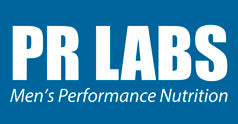What is the Prostate Health Index?

Do you remember the age you were when someone first sat down and discussed men’s health with you, specifically prostate health? For many men, this particular conversation was a brief interaction with their doctor after they reached a certain age; for others, this conversation may not have happened at all. Either way, the key to increasing awareness of prostate health comes to education and spreading awareness.
To maintain excellent prostate health, there are many diets and exercise tips available for men who wish to take a more preventative approach, but what about those who have seen multiple diagnoses of prostate cancer within their family? Will these tips and tricks have any effect at all? Researchers and physicians have various thoughts on the proposed question, but some believe prevention or early detection through screening is vital. Let’s discuss the advances that we have seen in prostate health and how those have led to using the Prostate Health Index (PHI).
Prostate Cancer and Early Screening
In the U.S., Prostate cancer is the second most common type of cancer found in men - the first is skin cancer. Some men may have a higher chance of getting it if prostate cancer runs in their families, but all men are at risk. This is why screening tests have become critical for men and their prostate health. Since the 1970s, there have been many advances in early prostate cancer testing thanks to the Prostate Specific Antigen (PSA) test - a blood test that measures the level of PSA in a male’s blood. So what are these prostate-specific antigens? PSA is a protein produced by normal cells of the prostate gland. During a PSA test, a blood sample is sent to a laboratory for analysis. The results are usually reported as nanograms of PSA per milliliter (ng/mL) of blood. In the 1980s, the PSA test became FDA-approved for monitoring prostate cancer, and then in the 1990s, it became approved as a tool for early detection.
The PSA test has since become one of the most commonly used screening tests along with Digital Rectal Examination (DRE).
Prostate Health Index Test
In recent years, there has been a significant focus on making early detection screening tests more accurate. What if there was a formula or prostate health calculator to make the PSA tests more accurate? This is almost precisely what the Prostate Health Index (PHI) is used for. Although it is not an actual prostate health calculator, the PHI is an FDA-approved blood test that uses a mathematical formula that combines the results of Total PSA, Free PSA, and p2PSA to determine a score representing the probability of prostate cancer in an individual. The Prostate Health Index test score can help identify or classify a man’s risk for developing prostate cancer and thus, reducing unnecessary biopsies. The PHI should not be used as an initial test for early screening, and based on the PSA test, your doctor will determine whether or not to use the prostate health index formula.
One of the reasons why the PSA test was considered controversial in the 1990s is that the blood test results often can’t distinguish between prostate cancer and benign conditions. Hence, results were not always considered conclusive - PHI helps to differentiate between the two.
Other Preventative Methods
As we mentioned before, there are other tips that researchers have shared to maintain prostate health. Keep in mind, these are just tips that may support long-term prostate health and may not actually prevent prostate cancer, but regardless, these are positive habits and routines to adopt.
Researchers and physicians who have studied the effects of diet and physical activity on prostate health usually recommend a lifestyle that involves an overall pattern of healthy eating rather than following a specific diet. However, certain foods should be included in healthy eating for prostate health.
According to The Prostate Cancer Foundation, here is a list of some healthy foods to try to incorporate into your lifestyle and why they might help to support prostate health:
- Cruciferous Vegetables - Veggies like kale, cauliflower, cabbage, broccoli. These vegetables are all high in antioxidants, minerals, and vitamins that may help to lower inflammation (which can be related to prostate cancer).
- Berries - Most berries are high in antioxidants and can help prevent free radicals caused by environmental factors that cause oxidative stress.
- Omega 3’s - Incorporating “good fats” from foods like avocado or fish.
- Coffee and Tea - Especially green tea; both are high in antioxidants.
Another way to take care of your prostate health - especially if you are finding it difficult to eat an antioxidant-rich diet - is through supplementation. Here at PR Labs, we have developed a powerful prostate supplement for men. Prost-P10x is a Urologist-Formulated Natural Prostate and Urinary Health Support supplement. The active ingredients in Prost-P10x also include antioxidants and other agents to encourage normal prostate and urinary function. Supportive, but not conclusive research, has shown certain ingredients in Prost-P10x to provide support for the body’s natural response processes that affect men’s sexual and prostate health.
Conclusion
Prostate Health is an essential part of men’s health, and it’s important to educate yourself on ways that might help prevent prostate cancer or even methods used to screen for early detection. Over the years, there have been significant advances in prostate health and early screening tests that have helped lower the fatality rate for prostate cancer by nearly fifty percent! We have education awareness, Prostate-Specific Antigen tests, and the Prostate Health Index to thank for that. In the meantime, eat your veggies, take your prostate supplements, and talk to your doctor regularly about prostate health.
Join Our Community & Save 10% Off Your First Order
We’ll send you a coupon code for 10% off your first order. Stay on our list
and we’ll keep you updated with tips for optimal health, new product launches, sales, and more!




